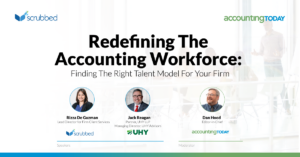At a Glance
During the post-implementation review of the Financial Accounting Standards Board (“FASB” or “Board”) with the ASU 2016-13, Financial Instruments-Credit Losses, the Board eliminated the requirement for creditors to recognize and measure certain modifications as troubled debt restructurings (TDRs). Since credit losses from loans modified as TDRs were already incorporated into the allowance for credit losses, the recognition, measurement, and disclosure requirements related to TDR were no longer needed.
In addition, the Board observed notable inconsistencies in the disclosure requirements and discussed whether these disclosures provided decision-useful information regarding the modifications with troubled borrowers and the subsequent loans that several financial institutions provided during the pandemic.
ASU 2022-02 was issued, eliminating the inconsistencies by amending ASC 326-20-50-6 and ASC 326-20-55-79.
On March 31, the FASB issued an amendment to the credit loss model, also referred to as CECL, ASU 2022-02 Financial Instruments–Credit Losses (Topic 326): Troubled Debt Restructurings and Vintage Disclosures eliminating the creditors’ requirement to recognize and measure modifications as troubled debt restructurings (TDRs).
Note: With CECL effective beginning of 2023, there was a request to FASB to remove TDR reporting for 2022;. However, during a board meeting, the Board made it evident that TDR reporting is essential to the incurred loss model. For those who have not yet adopted CECL, TDRs must still be recognized and disclosed as usual under ASC 310-40 requirements.
What You Need to Know
1. Modifications of receivables to debtors experiencing financial difficulty
ASU 2022-02 removes the recognition and measurement guidance in Subtopic 310-40 (Receivables—Troubled Debt Restructurings by Creditors) for receivable restructuring and refinancing under the TDR criteria. It further requires that a company assesses whether the modification denotes a new receivable or a mere continuation of an existing loan consistent with the guidance in 310-20-35-9 through 35-11 which impacts the receivable’s discount rate and the accounting for unamortized net fees and costs.
A. The refinanced receivable should be accounted for as a new loan if the new receivable’s terms are as beneficial to the creditor as the terms for comparable receivables to other customers with similar collection risks who are not refinancing or restructuring a receivable with the lender. This criterion would be met (1) if the new effective yield is at least equal to the effective yield for such receivables and (2) modifications of the original debt instrument are more than minor (if the present value (PV) of the cash flows under the new terms is different by at least 10 percent from the PV of the remaining cash flows under the original terms). Any prepayment penalties, unamortized net fees, or costs from the original receivable should be recognized in interest income when the new receivable is granted. A new receivable would result in a loss recognized upon modification.
B. If the refinancing does not meet the above criteria, or if only minor modifications are made, the unamortized net fees or costs from the original receivable and any prepayment penalties should be carried forward as a portion of the net investment in the new receivable., The investment in the new receivable should consist of the remaining net investment in the original receivable, any additional amounts advanced to the borrower, and direct loan origination costs, or any fees received that are associated with the refinancing or restructuring. Continuation of an existing receivable would result in a prospective yield adjustment.
2. Enhanced disclosures by creditors for modifications from debtors experiencing financial troubles
ASU 2022-02 also presents new disclosure requirements in the form of principal forgiveness, term extension, interest rate reduction, or other-than-insignificant payment delay. The covenant waivers and modifications of contingent acceleration clauses would not be considered term extensions for the purposes of these disclosures.
The following financing receivables are not affected:
- Receivables measured at fair value (FV) with changes in FV reported in earnings
- Receivables measured at lower of amortized cost basis or FV
- Trade receivables that have both (except for credit card receivables):
- With a contractual maturity of one year or less, and
- Arising from the sale of goods or services
- Participant loans in defined contribution pension plans.
The following should be disclosed during the reporting period, for which a statement of income is presented:
1. By class of financing receivable, both quantitative and qualitative information about the following:
a. Types of modifications used, with the total period-end amortized cost basis of the modified receivables and the percentage of modifications made in relation to the total period-end amortized cost basis of receivables in the class of financing receivable.
b. The financial effect of the modification (by type), providing information about the revisions to the contractual terms and including the incremental effect of the principal forgiveness on the amortized cost basis of the modified receivables, as applicable, or the decrease in weighted-average interest rates (versus a range) for interest rate reductions.
c. Receivable performance for 12 months after a receivable modification is made.
2. By portfolio segment, qualitative information on how the modifications and the subsequent performance of the debtors are considered in determining the allowance for credit losses.
Note: It is possible for receivables to be modified in more than one manner, but disclosures necessary for users to understand the different combinations of modifications provided to borrowers should be presented.
3. Vintage disclosures
ASU 2022-02 requires a public entity to disclose current-period gross write-offs by year of origination (i.e., the vintage year) for financing receivables and net investments in leases within the scope of Financial Instruments—Credit Losses—Measured at Amortized Cost (Subtopic 326-20).
a. For financing receivables and net investments in leases by origination year, a public business entity should provide the gross write-offs recorded in the current period on a current year-to-date basis.
b. For origination years before the fifth annual period, a public entity may provide the current period gross write-offs for financing receivables and net investments in leases in the aggregate.
Note: In each reporting period, a public entity should disclose by class of financing receivable, the amount of line-of-credit arrangements that are converted to term loans in each period, and the total of these financing receivables that were written off in the current reporting period.
Does it Affect your Company?
- The guidance applies only to entities that have adopted the credit impairment standard, ASU 2016-13, Financial Instruments—Credit Losses (Topic 326): Measurement of Credit Losses on Financial Instruments.
- For entities that have not adopted the ASU 2016-13, TDR guidance is still applicable until the adoption of CECL.
- ASU No. 2022-02 does not affect the accounting for borrowers; the TDR accounting model for borrowers was not amended nor eliminated.
- The amendments associated with TDRs, including the new disclosures related to modifications, impact all entities after adopting ASU 2016-13.
- The public entities with investments in financing receivables and net investments in leases that have adopted ASU 2016-13 are also affected by the amendments related to vintage disclosures.
What are the Effective Dates?
The amended guidance in ASU No. 2022-02 is effective as follows:
• For entities that have already adopted ASU 2016-13, the amendment is effective for fiscal years beginning after December 15, 2022, including interim periods within those fiscal years.
• For entities that have not yet adopted ASU 2016-13, the effective dates are the same as those for CECL (effective upon adoption of ASU 2016-13).
Transition Methods
- ASU 2022-02 should generally be applied prospectively.
- For the transition method related to the recognition and measurement of TDRs, an entity can opt to apply a modified retrospective transition method, causing a cumulative-effect adjustment to retained earnings during the adoption period.
- Companies that have adopted ASU 2016-13, permitted to have an early adoption of the ASU, including adoption in an interim period.
- If an entity elects to adopt ASU 2022-02 in an interim period early, it should be applied as of the beginning of the fiscal year, which includes the interim period.
- An entity has the option to early adopt the amendments about TDRs and related disclosure enhancements separately from the amendments related to vintage disclosures.
SEC Filings to Note
If a calendar year-end public entity adopts ASU No. 2022-02 in an interim period, the change will be reflected as of January 1, 2022, even if it is not adopted in the first quarter. Entities must consult their auditors and SEC counsel to establish whether their previously issued Form 10-Qs are required to be recasted (through Form 8-K, for example) for transactions with capital markets or registration statements if the new guidance is not adopted in the first quarter. Otherwise, the company will include the amended prior quarter information in year-to-date disclosures and comparative information in future filings. For example, information in 2022 is stated for comparative purposes in the 2023 quarterly filings.
Entities are also required to disclose revised quarterly supplementary financial information through Form 10-K if the recasted data is materially different from the balances previously disclosed in Form 10-Qs, per Regulation S-K Item 302. The designated financial data table in Form 10-K is not affected because the prior year balances are not affected by the adoption of ASU No. 2022-02.
Entities also need to assess whether any significant changes in internal controls over financial reporting exist in the period of adoption that might need to be disclosed in Item 4 of Form 10-Q or Item 9A of Form 10-K if the new guidance is adopted in the fourth quarter.
It’s Time to Get Ready
Start gathering information and streamline procedures on how the allowance for credit losses related to TDRs will be measured and apply the enhanced disclosure requirements. Further, assess a larger population of modifications to determine whether to account for them as new receivables or continuations of the existing receivables.




